I touched Panasonic's Micro Four Thirds single-lens camera 'GH6'

Panasonic's interchangeable lens Micro Four Thirds single-lens camera 'G' series new high-end machine ' GH6 ' was released on March 25, 2022 (Friday). After the previous model ' GH5 ' appeared in March 2017, the ' GH5S ' with enhanced video recording capability appeared in January 2018, and the ' GH5II ' with added wireless live distribution function appeared in June 2021. However, it was the first major version upgrade in 5 years, so I borrowed an actual machine and touched it.
DC-GH6 | G Series SLR Cameras | Product List | Digital Camera LUMIX | Panasonic
The outer box looks like this.
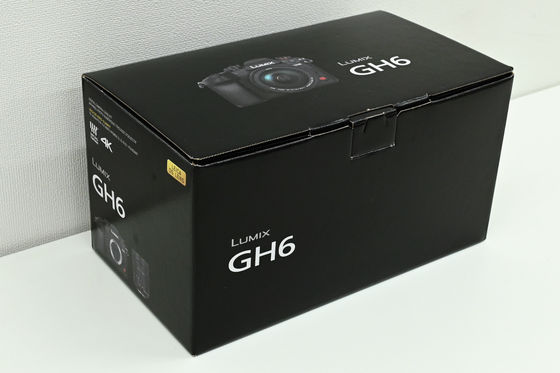
List of contents. In addition to the instruction manual, main unit, battery charger, etc., this one is a lens kit, so
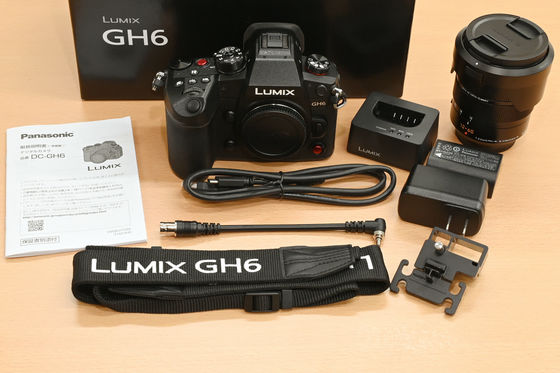
The weight of the main body is 823g with one battery and one SD card installed.
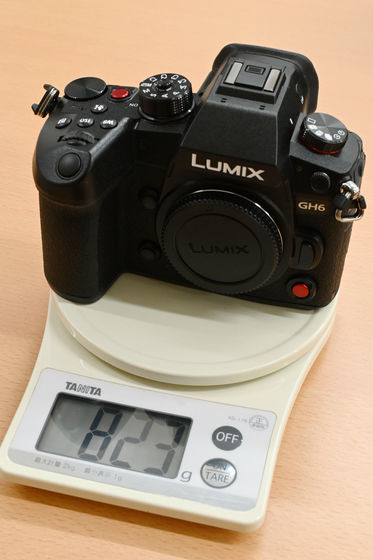
The lens weighs 378g with a hood and cap. The weight when carrying with a lens is about 1.1 kg.
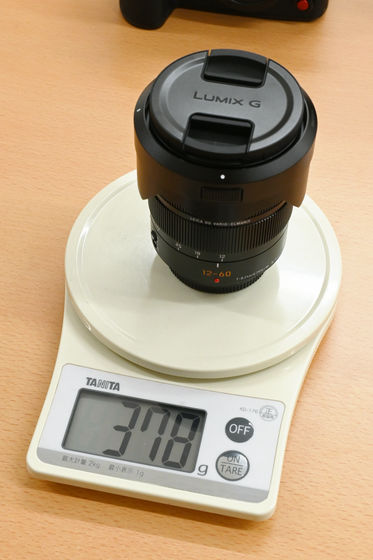
The front of the main body looks like this. The dimensions are 138.4 mm x 100.3 mm x 99.6 mm. The red button that stands out at the bottom right of the front is the sub video recording button.

right side.
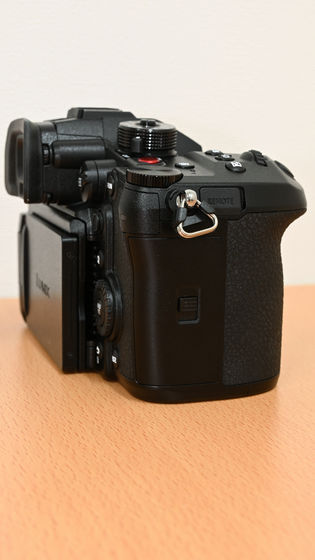
When you open the card door, there are two card slots. 1 is the CFexpress slot and 2 is the SD card slot.

The back looks like this.
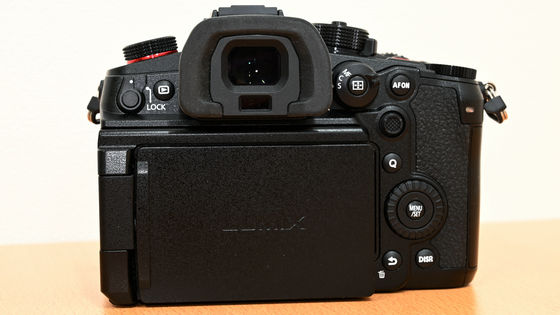
The monitor has a vari-angle specification.
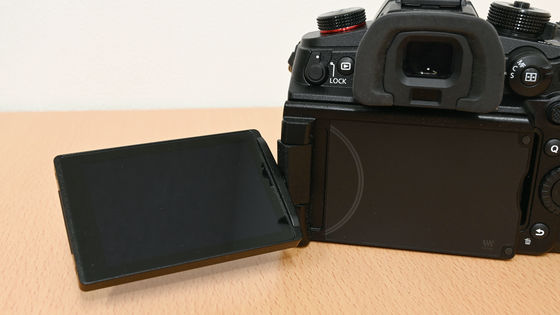
Various terminals are concentrated on the left side.

From the top, the microphone terminal, headphone terminal, USB terminal, and HDMI terminal are lined up.

In addition, there is an air intake between the monitor on the back and the control dial ...

There is an exhaust port on the left side of the main body.

The top is like this. The red button is the video recording button.
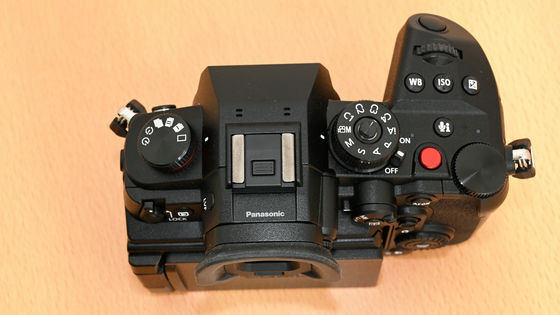
A tripod mounting hole in the center of the bottom.

Set the battery in the grip.

The attached battery is the DMW-BLK22 with a capacity of 2200mAh, but the DMW-BLF19 (capacity 1860mAh) used for the GH3, GH4, and GH5 can also be used, although some functions are limited.
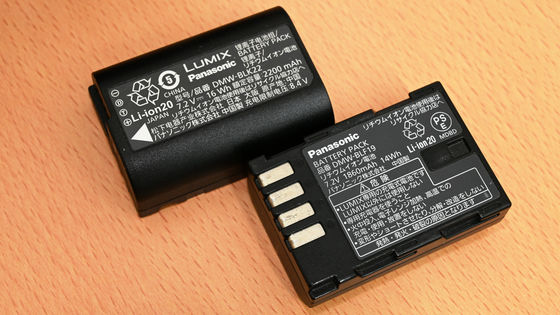
The charger is connected via USB Type-C. A USB Type-C cable and conversion adapter are included.
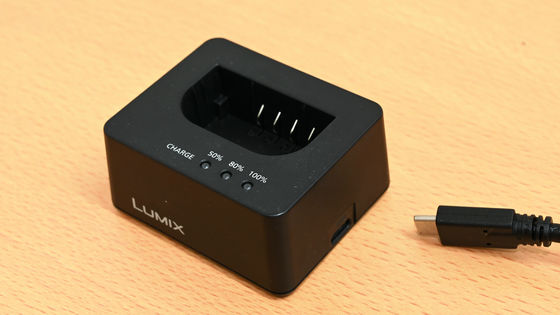
The checker function allows you to check the remaining amount and charging status at a glance.

The rear monitor looks like this. The menu is broadly divided into 6 items such as 'photographing' and 'video recording', and it is easy to understand which major item is currently displayed by using an icon in each hierarchy.
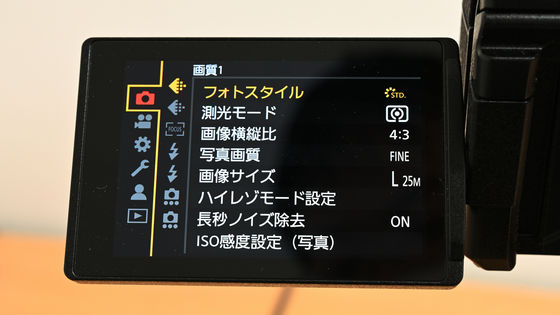
Even if you switch sub-items, the icon display in the left two columns remains as it is.
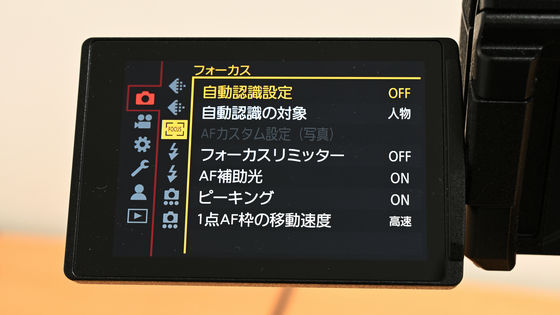
When making changes, only the choices are displayed brighter and larger.
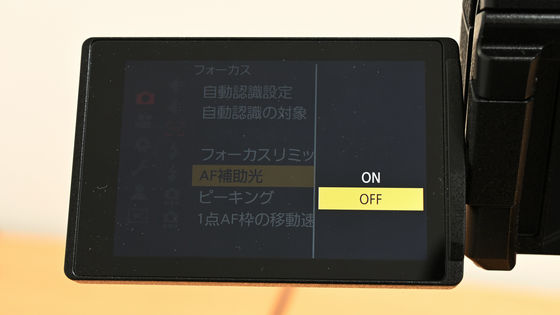
One of the characteristic items is 'High resolution setting' in 'Photographing'. This is a function that combines images taken multiple times with higher resolution.
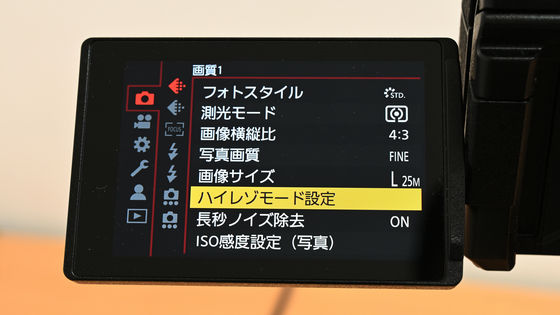
Since the main target is a static subject, shooting with a tripod is a prerequisite, but if you turn on 'Handheld shooting', you can shoot photos with higher resolution without a tripod.
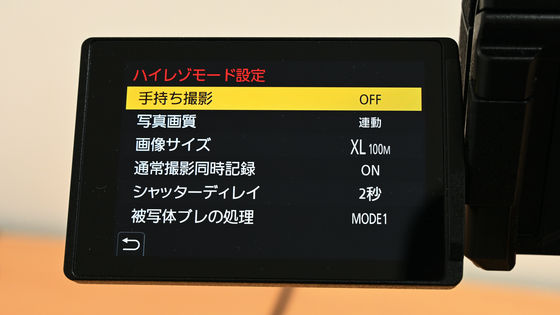
The maximum resolution of the pictures that can be taken is 11552 pixels x 8672 pixels with the 'XL' setting when the image aspect ratio is 4: 3.
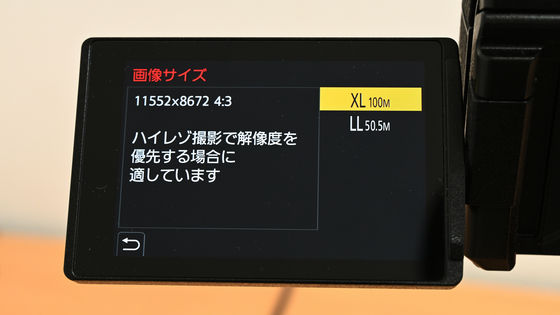
In addition, since exhaust heat is important as the fan's intake and exhaust ports are provided, the fan operation mode can also be set.
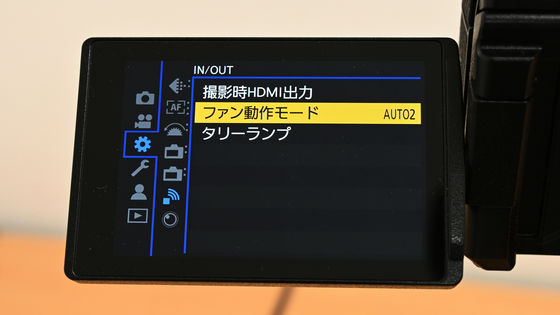
The default is 'AUTO 2' which switches OFF / low speed / standard according to the temperature of the camera.
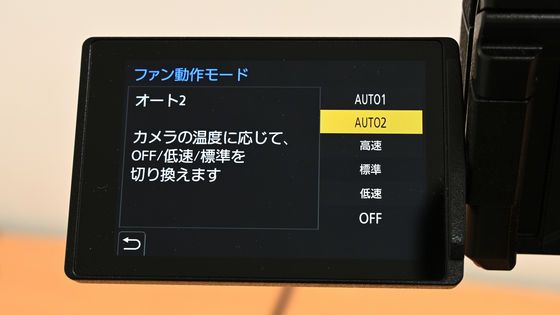
The fan sound is at a level that is not so noticeable even in a quiet room at low speed (around 41.5 dB), the standard is a level that is not noticeable when taken out (around 52.5 dB), and the microphone can pick up the fan sound at high speed. Sexual level (around 60 dB). The movie that I actually switched to is as follows.
Comparison of fan sounds of Panasonic SLR camera 'GH6' at OFF / Low speed / Standard / High speed --YouTube
So, the examples that I actually took out and shot are summarized in the next article.
[·to be continued]
Related Posts:







